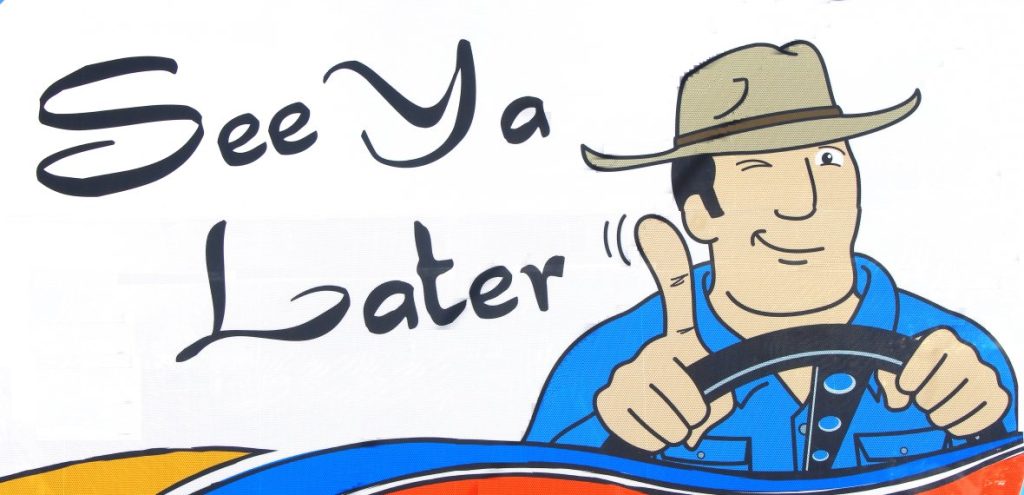There’s only one thing more poignant than watching a movie with a tragic ending and that’s going to the place where the tragedy took place. The difference between triumph and disaster a mere nine hours. Life and death crossed paths on the way to Coopers Creek and I was on my way there.
I left Thargomindah with some advice about the road ahead. Single lane tar for most of the way and the rocky gravel either side meant any error of judgement could be fatal. I guess they call it the Adventure Way for a reason. The rules became clearly quite quickly. Both hands on the wheel, look neither left or tight and respect the hierarchy. On this stretch of road it was very much rock-paper-scissors. Truck beats van, van beats car, car beats bike, bike knew the risks. Luckily, the road is very straight and there was plenty of time to slow right down before pulling to one side.

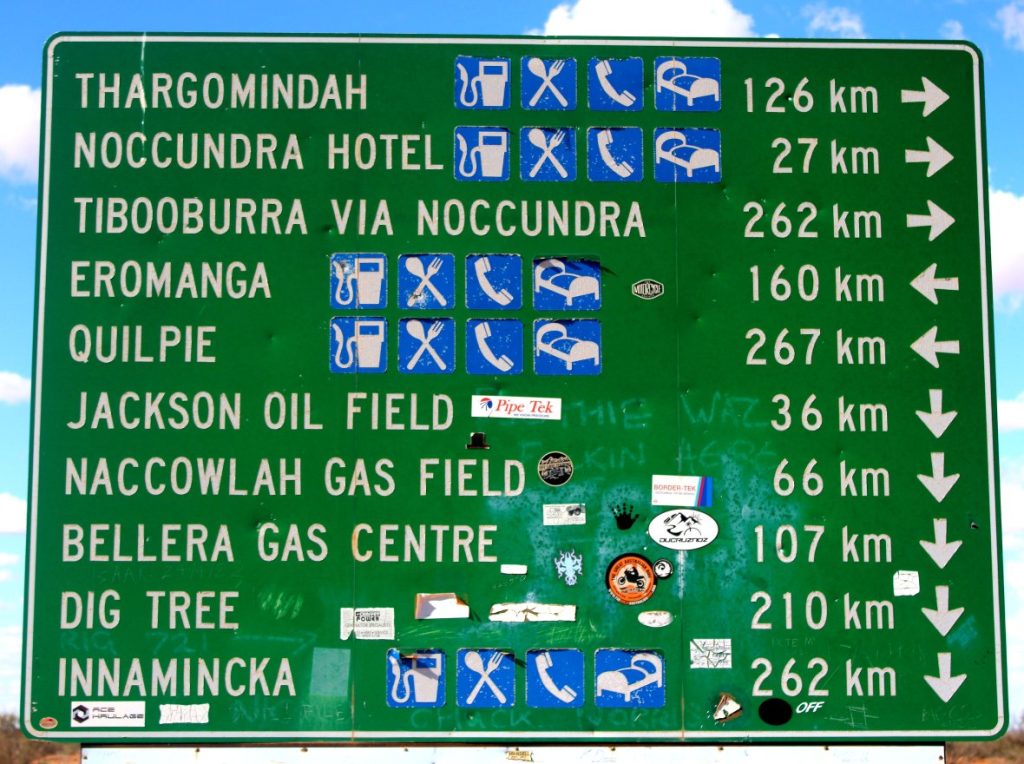
Of course, when van meets van, we gave each other plenty of notice, but really, for the first two hours, it was two semis, one van, one bike and four cars. Reached the turnoff to Innamincka just after lunch. This is another black top spur line but I was hoping to back road it from Innamincka and rejoin the Adventure Way halfway to Birdsville. It was just 2pm. Given the approaching rain trough, I knew I had maybe 24 hours to play with and decided that I would risk an overnight, 14klms up a dirt road and a creek crossing quest, to get to Coopers Creek and the legendary DIG tree.
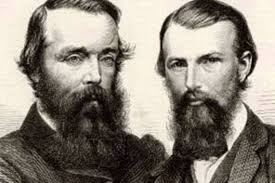
For the benefit of my international readers, the Burke & Wills expedition of 1861 is the quintessential, colonial, explorer tragedy. Their aim was to find a way route across Australia from south to north for a possible telegraph line to connect with the cable to Europe, that had just reached Java. They left the main expedition party at Coopers Creek and with two others, King and Gray pushed on to the Gulf of Carpentaria and success. But the timing of that push was ill-timed, in the heat of an outback summer, and the duration under estimated.

They had instructed the main group to wait for four months for their return. The group abandoned the camp on the morning of 21st April 1861. Burke, Wills and King arrived, weak and starving just 9 hours later. DIG was the instruction carved into a tree by the main party and supplies buried just in case. Both Burke & Wills succumbed within a week after trying to walk south. King befriended some aboriginals and was found by a rescue party three months later(a very detailed and readable account can be found in Wikipedia).

I arrived late in the afternoon and the stillness was like a cathedral of poignancy and sorrow. I could see the last ridge that they breasted, hoping against hope that their rescue was imminent. And then the horror of being abandoned, compounded by the realization how close they had come only to be thwarted by an obscenely tiny amount of time, and maybe as little as twelve miles adrift. Looking at the geography of the area, it is possible that in a moment of time, both parties had line of site of each other, but too far apart to be seen.
Now, here’s that detail I mentioned. There is not one, but TWO DIG trees. This tree was thought to be the only one and gives instructions to the location of the buried rations. And you can see why, it’s a very impressive tree now over 270 years old. Why the second tree? Hard to say. Maybe the ground was softer. Maybe they wanted the rations to be somewhere discreet as to not attract attention of the Yandruwandha people.

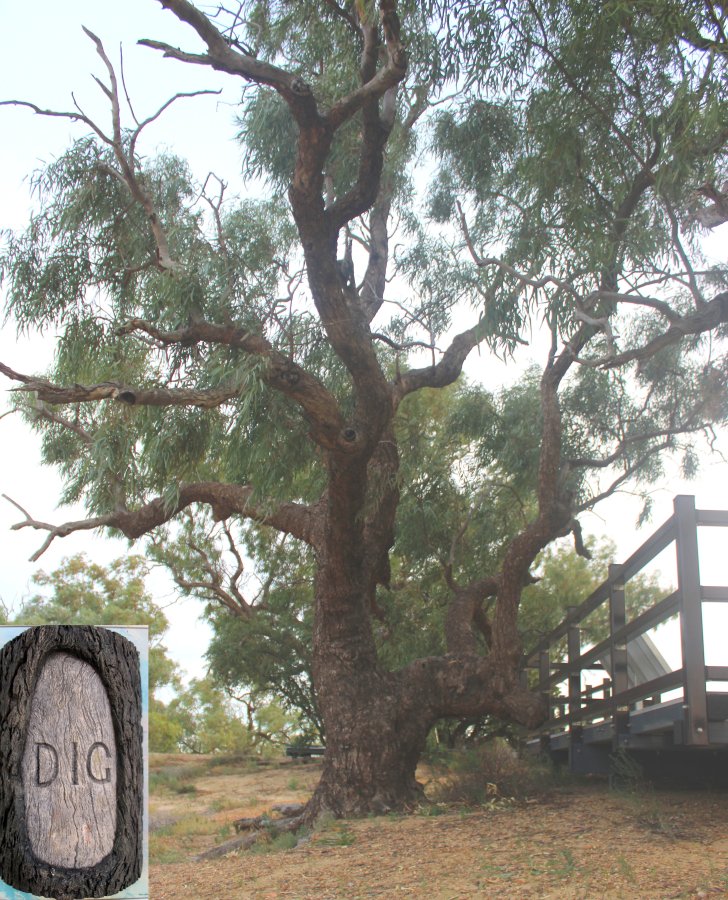
But the truth is, this blaze was pointing to another on the tree close to it, known as the Brahe tree. The exact inscription is not exactly known. It still exists but long covered by bark, as are nearly all the original blazes. Technically, the bark could be cut away to reveal them, but potential fatal damage to the tree as a result, makes that not an option. In a footnote, in 1898 a blaze portrait of Burke was carved into a nearby Coolabah tree and is still visible today.
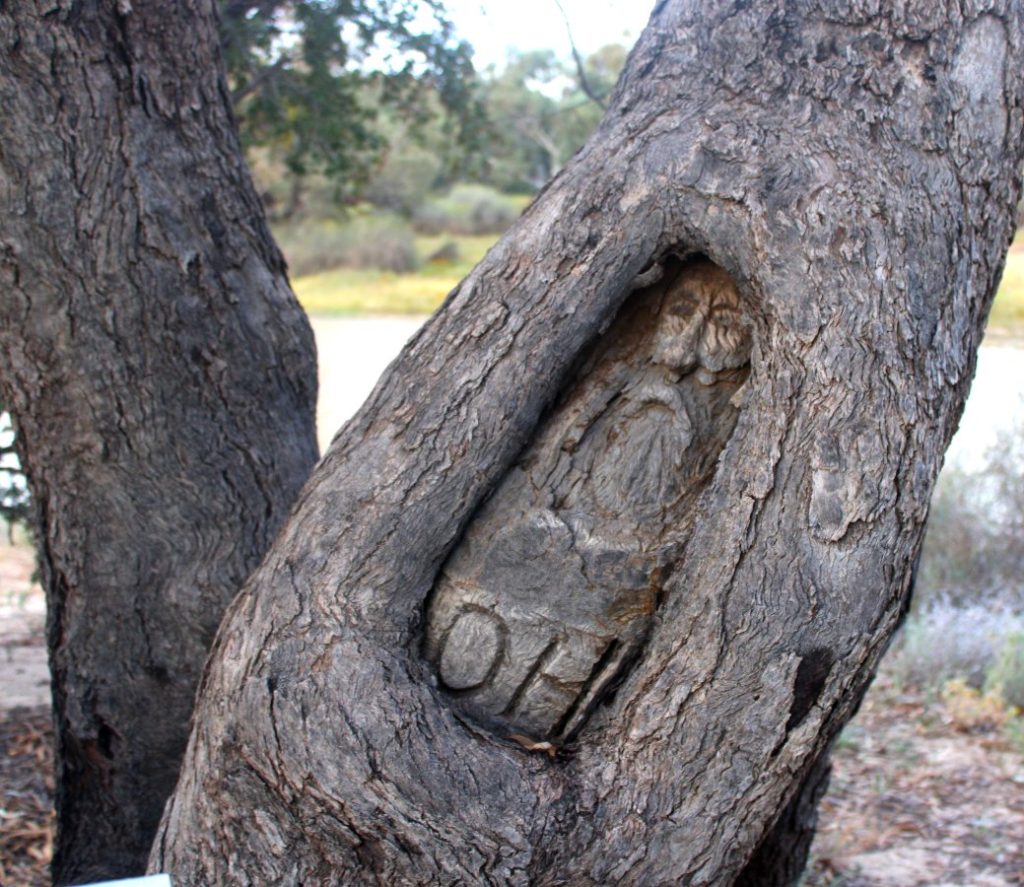
It’s a very rare privilege to stand in the footsteps and imagine the emotions of Burke, Wills and King on that fateful afternoon. There are many, ‘if only’s’ that could have meant a different outcome. Something as simple as the day they lost burying Grey, the injured member of the main party, whose broken leg swayed Brahe to leave Cooper Creek earlier than he intended. The list goes on. The next morning I was woken early by a stiff wind and I knew that my time here was up. I almost left when I realized that I had not laid a hand on these two trees. After a quiet moment, I headed back to the main road and that tail wind had me in Innamincka by 10am.
Some of you know already, that my four days in Innamincka was spent marooned in a pond of storm water, perched precariously on what felt like solid ground when I arrived, but turned out to be fools bedrock. In my defense, the risk was well known to the locals, but no warning signs at the entry to the Common. The rain started late that afternoon, but the predicament didn’t manifest itself till about midnight. Fourty-two mils, daylight and a tricky trudge to the Trading Post, confirmed I wouldn’t be going anywhere for a few days while the ground dried out.
Still, as they say, every cloud is laden with doom…no, wait, that’s the other one. Silver lining, that’s it. Another sight seen only by a few. Three cattle trains lined up to deliver cattle to a nearby cattle station. Station hands on horses an quaddies, ready to muster and steer them down the road.

Even knowing that my stay at Innamincka was not indefinite, trudging back 500 metres through the mud and flies, I wondered if an enforced rest was going to be as pleasant as one I could have chosen of my own free will. Well, looks like I’ll have plenty of time to find out.
